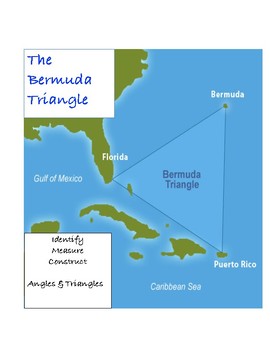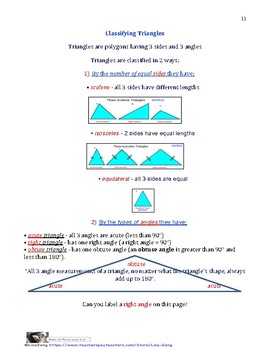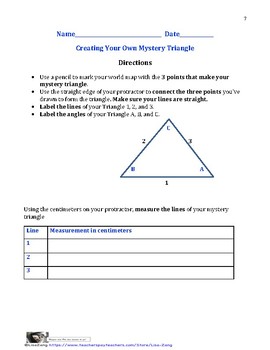Measuring, Identifying, and Constructing Triangles and Angles
- PDF
Description
Students readily connect triangle/angle concepts and relationships as they create their own mysterious triangles. You will have fun teaching this one! Plan for at least two one-hour time periods.
Students will learn to identify, measure, and construct angles and equilateral, isosceles, and scalene triangles in a highly engaging lesson using the concept of the Bermuda Triangle as the foundation for engagement.
Common Core Standards: 4.G.A.1; 4.G.A.2; 5.G.B.3 materials can also be extended or
Materials Provided in the 17 pages of this packet include:
- Lesson plan
- Reproducible World Maps for Students
- Reproducible student friendly History of the Bermuda Triangle (provided here in this packet and also found at https://www.coolkidfacts.com/the-bermuda-triangle/ )
- Reproducible triangle definitions for students: Classifying Triangles
- Reproducible Activity Worksheet: Classifying the Bermuda Triangle
- Reproducible Activity Worksheet: Creating Your Own Mystery Triangle
- Reproducible Activity Worksheet: The Legend of Your Own Mystery Triangle
- Reproducible Example completed worksheet: The Legend of Your Own Mystery Triangle -- The Duck Duck Goose Triangle
This lesson is very effective, and usually becomes a lesson of not only geometry, but also of folklore, geography, and culture. As an example, a student from South
Africa in my class, located another “mysterious triangle” on the map and shared a story that she identified as a part of her South African folklore.





